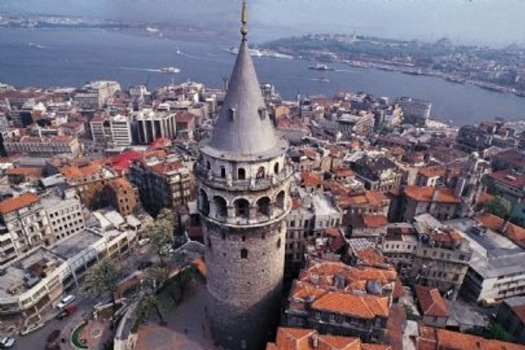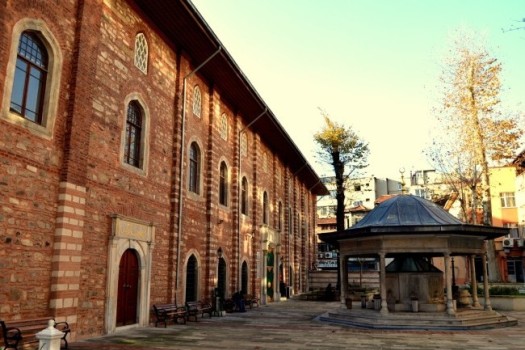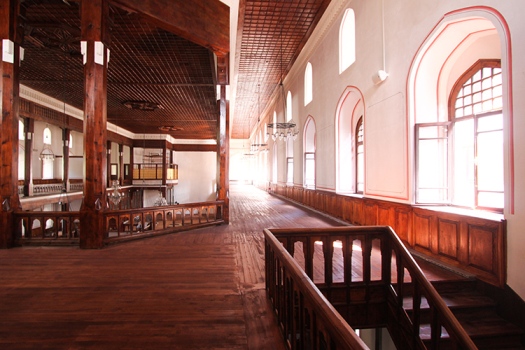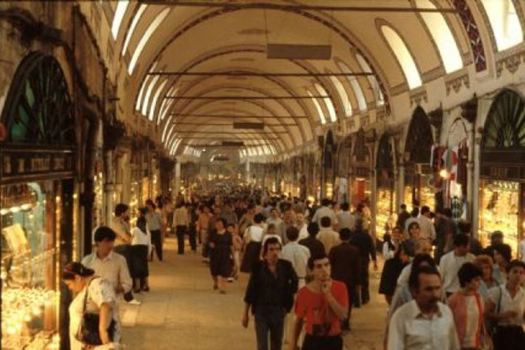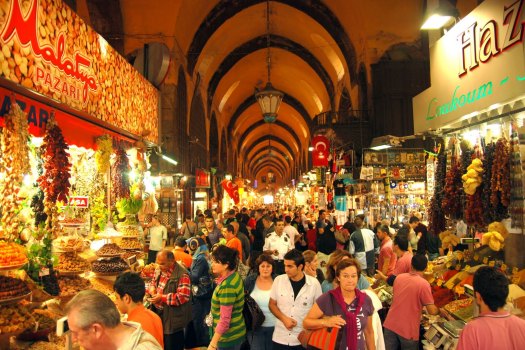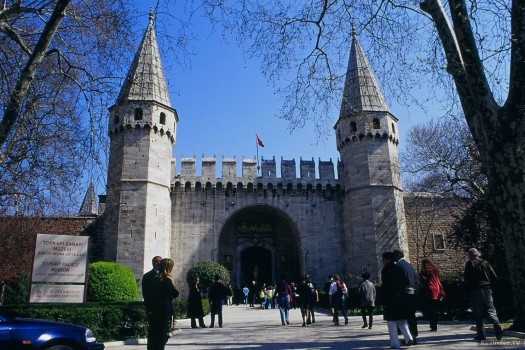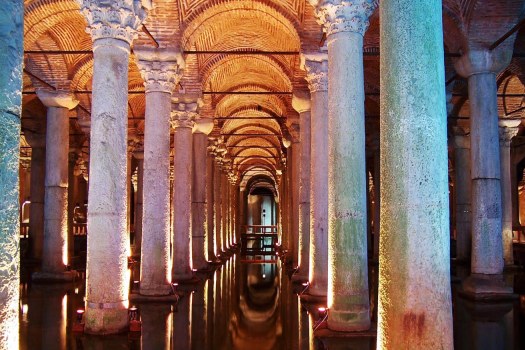GUIDE
Best Locations
MaRaVILLOSO Pera which is ideally located close to Istikal Street, Istanbul's most popular pedestrian street, is the perfect base for visitors wishing to explore Istanbul. Most of Istanbul’s attractions are within walking distance from MaRaVILLOSO Pera including the Galata Tower, the Whirling Dervish Hall, Taksim Square, the Pera Museum, the Museum of Modern Arts, the Neva Salom Synagogue, the Hagia Triada and much more.
The Taksim district, in which our hotel is situated, is a popular and lively district which hosts numerous cultural events throughout the year including festivals, art exhibitions, plays, operas and concerts. The area also offers an array of excellent restaurants, bars and cafes
Some Points Of Interest
Galata Tower
The distinctive 62-mt (205-foot) tower with its conical roof is an icon of Istanbul, drawing visitors to its lookout as well as the base, where a lively evening scene finds people from all over the world sipping tea and chatting.
Boasting panoramic views of the city and sea, this tower was built by Istanbul’s Genoese trading community as part of their fortifications.
Although Genoese were forbidden, under the Byzantine rule, to fortify the colony, they enclosed portions of the neighbourhoods behind thick crenelated walls.
Galata Tower is the landmark in these walls. Originally known as the Tower of Christ, it was built in 1348 with walls almost 4 m. thick as the apex of the fortifications of Genoese Galata.
Thoroughly rebuilt several times in the history, the tower was opened to the public in 1967.
Today it has a café/restaurant on its upper floor with panoramic view of Istanbul.
Bereketzade Mh., Galata Kulesi, Beyoğlu, Open daily 8am-9pm.
(0212) 244 7736.
Arap Mosque
The “Arap Camii,” which is situated on Nafe Sokak, was originally a Roman Catholic Church erected in the 13th century by the friars of the Dominican Order dedicated to Saint Paul in 1233.
Although the structure was altered and converted into a mosque during the Ottoman period, it is the only example of medieval religious Gothic architecture remaining in Istanbul. Recently, it was uncovered that the building was originally decorated with frescoes illustrating Biblical depictions.
Now they were plastered over.
Arap Cami Mh., Galata Mahkemesi Sok., Beyoğlu
Whirling Derwishes
A short way down the Galip Dede Street, it is Mevlevi Lodge (Galata Mevlevihanesi). Built in 1492 by a direct descendant of Jalal ad-Din Muhammad Rumi -also known as Mevlana- the place was called historically as a tekke, a lodge of the mystical brotherhood. Banned and abandoned early in secular Turkish republic, Galata Mevlevihanesi re opened its doors in 1975 this time as a museum and a library, devoted to the mystical writings of the Sufi poets and dervishes. Performances are given by whirling Mevlevi dervishes in three Sunday a month.
Şahkulu Mh. Galip Dede Caddesi, No: 15, Tünel.
Open 9am-7pm (at summer time) and 9am-4:30pm (at winter time). Closed on Mondays.
(0212) 245 4141
Yelkenciler Han
One of the oldest buildings along the Golden Horn from the Ottoman era. This 17th century han - once adjacent to the medieval walls- was the centre of sailcloth manufacturing in the Ottoman times. Though discontinued the marine supplies production long ago, it still is working.
Arap Camii Mahallesi, Yemeniciler Cad., Kurtçu Hamam Sok., Beyoğlu
Rüstem Pasha Caravanserai
Built by Sinan for the grand vizier Rüstem Pasha in the mid-16th century as an eight-domed caravanserai, Rüstem Pasha Han (or Kurşunlu Han) is still a working han. Don’t miss the Corinthian cap on the left at the entrance. It was probably taken from a church that was turned down when the han was built, and pressed into service as part of a water pump.
Arap Camii Mahallesi. Tersane Caddesi, Kürekçiler Kapısı Sokak. No: 47, Beyoğlu.
Perşembe Pazarı Caddesi
If you are looking for a vivid portrait of a way of work that is unlikely to last very long, go to the Perşembe Pazarı Caddesi. It is a narrow street -between Tersane Caddesi and Bankalar Caddesi- lined with very picturesque 18th century houses and hans (Serpuş Han etc.) whose upper stories zigzag decoratively and look very medieval. Don’t miss the painting of Galileo, on the ceiling of a room in Serpuş Han, which was built upon the foundations of a Genoese structure. The three-story han full of craftsmen working on various hardware essentials, housed booksellers in the 18th-century.
İstanbul Modern
The Istanbul Museum of Modern Art, which the New York Times called “the changing face of Turkey,” is the most prominent of Istanbul’s contemporary galleries. Founded in 2004 in the huge former warehouse on the shores of the Bosphorus, the museum displays everything from the masters of modern Turkish art to international shows. Although its restaurant is not the main attraction, for many visitors.
Kılıç Ali Pasha Mosque
One of Architect Sinan’s most important 16th century works, with a plan similar to Ayasofya.
Kılıç Ali Pasha Mosque was commissioned by the Italian-born Giovanni Dionigi Galeni, who was captured and made slave by Mediterranean pirates on his way to Naples to study for the priesthood.
Giovanni ended up in the service of the sultan, finally being made an Ottoman grand admiral.
That’s how he took the name “Kılıç Ali Pasha.
Kemankeş Karamustafa Paşa Mh., Tophane İskele Cad., Beyoğlu
Azapkapı Fountain
Built in 1732-1733 for the Valide Sultan Saliha, mother of Sultan Mahmud I.
Azapkapı Fountain is perhaps the most attractive 18th century baroque fountain in Istanbul.
The facades are covered with floral motifs and fruit trees in low relief.
Tersane Caddesi, Azapkapı, Beyoğlu
Sokullu Mehmet Pasha Mosque
Beyond the fountain, one may see interesting seaside mosque of Sokullu Mehmet Pasha, known as Azapkapı Mosque as well. Built by Chief Architect Sinan in 1577-8 for the Grand Vizier, Sokullu Mehmet Pasha, the mosque has gone under several restorations till today.
Cevahir Çıkmazı, Azapkapı, Beyoğlu
Tophane Fountain
Located between Nusretiye Mosque and Kılıç Ali Pasha Mosque in the square of Tophane neighbourhood, Tophane Fountain (Çeşmesi) is an 18th-century public water fountain commissioned by Ottoman Sultan Mahmud I. It was built in the Ottoman rococo architecture in an era that great importance was attached to the construction of many reservoirs and public fountains in İstanbul. Its marble walls with floral design are beautiful. The name of the neighbourhood was derived from the imperial cannon foundry, known as Tophane-i Amire.
Kemankeş Karamustafa Paşa Mh., Tophane İskele Cad., Beyoğlu.
Underground Mosque
This is the only mosque in the world where you step down the stairs to enter into a series of low-vaulted corridors. This 8th century structure was once the dungeons of the Galata Castle, where Byzantines stretched a chain across the Golden Horn to deter possible invaders. The place was converted into a mosque after the Conquest of 1453 by Sultan Mehmet II.
Kemankeş Karamustafa Paşa Mh., Kemankeş Cad., Beyoğlu.
SALT Museum
Located in the historic Anglo-French Ottoman Bank on Bankalar Caddesi (formerly known as Voyvoda Street), this cutting-edge institution houses an exhibition space, arts research library, an auditorium and an Open Archive of books, magazines, articles, CD/DVDs and theses. It is worthwhile just to see the building that is designed in 1892 by the Levantine architect Alexandre Vallaury. There is a cafe in the first floor and a restaurant on the roof.
Bankalar Caddesi 11, Karaköy. Tue-Sat 12-8pm; Sun 12-6pm. (0212) 334 2200.
Jewish Museum
Located not far from the Karaköy entrance of the Tünel (one stop underground line), the Jewish Museum displays the rich legacy of Turkish Jewry in a building, which functioned as a synagogue from 1671 to late 20th century. However the actual building was re-erected over its original foundations in the early 19th century. Because 1992 marked the five hundredth anniversary of this most gracious welcome of the Sephardim to Turkish lands, the synagogue was assigned that particular year by its owner to The Quincentennial Foundation to convert the building into a museum. Inaugurated in 2001, the Jewish Museum has a permanent exhibition that tells the unfolding story of Jewish culture and identity through hundred of works of art, archaeology, ceremonial objects, documents and photographs etc.
Arap Cami Mh., Perçemli Sokak No. 1, Karaköy, (0212) 292 6333
Hagia Sophia
Emperor Justinian inaugurated theHagia Sophia Cathedral in 537 C.E. Designed by Isidore of Miletus and Anthemius of Tralles, at the time of its construction, it was the most impressive building in the world and remained the crowning achievement of the Byzantine Empire for over a thousand years. Following the conquest of Istanbul, it was converted into a mosque by Mehmet the Conqueror in the 15th century, and over the centuries that followed, minarets, tombs, and fountains were added. The huge 56-mt (183-foot) high dome, which was designed to represent the heavens, has made this an architectural marvel for centuries, but equally impressive are Hagia Sophia’s well-preserved Byzantine mosaics.
Grand Bazaar
Long gone are the days when the caravans of traders on the famous Silk Road would stop to rest themselves and their camels at the Grand Bazaar; however, the structure and layout, including the ornate ceilings, remain virtually unchanged since the bazaar was built in 1493. Explore its labyrinthine corridors and marvel at the sheer number of shops, reputed to exceed 4,000 (though no one is certain), or sit down and enjoy the scene over a steaming glass of Turkish tea.
Spice (Egyptian) Market
Built facing the Golden Horn, this 17th century market was originally an extension of the New Mosque and financed by a tax paid on the sale of Egyptian goods. Sought after for its exotic spices and oils from the Orient, today dried fruits, caviar, and Turkish delight are available as well, and at prices generally lower than in the more famous Grand Bazaar. The market is a central hub of commercial activity for the area, while the surrounding streets are full of local craftspeople and traders who offer, in addition to Turkish coffee and spices, a great selection of cheeses and olives.
Blue Mosque
Opulent domes and balconied minarets soar upwards at the Blue Mosque, one of Istanbul’s most striking landmarks. Built during the reign of Sultan Ahmet I (1603-1617), it is Islam's answer to Hagia Sophia, which it faces across a well-tended square. To this day, the Blue Mosque remains the symbol and centre of religious events in the city and is Istanbul's only mosque with six minarets, as opposed to the four of an imperial Ottoman mosque or two of a traditional neighbourhood mosque. The name of the mosque is derived from the wealth of priceless blue Iznik tiles that dominate its interior and decorate the vast central dome designed to lift all eyes heavenward.
Topkapi Palace
Home to the Ottoman sultans and their court for over 300 years, building of the Topkapi Palace was commissioned by Mehmet the Conqueror, the 23-year-old sultan who captured Constantinople in 1453, making it the capital of the Ottoman Empire and rechristening it Istanbul. The palace was constructed between 1459 and 1478 and rapidly grew to become a sprawling complex of elaborate living quarters and administrative offices. The layout of the palace consists a series of interconnected courtyards that progress inwards, becoming increasingly more secluded and private.
Basilica Cistern
The Basilica Cistern was the Byzantine Great Palace’s reservoir and is thought to have been built around 532 B.C. A forest of over 300 columns stands in several feet of water which is home to a large school of blind carp and over which wooden walkways have been constructed. One of the highlights of the Basilica Cistern is the two columns whose bases are inverted medusa heads, repurposed from a Classical temple.
Istiklal Avenue
This three-km-long (1.86 miles) pedestrian avenue is the modern heart of Istanbul, and its most vibrant cultural, dining and nightlife district. Featuring an almost bewildering array of shops and restaurants, it is also a UNESCO World Heritage Site and noteworthy for its beautifully preserved 19th century architecture. It is the perfect place for shopping, a night out on the town, or just a leisurely stroll. The historic tramway, which runs the full length of the avenue, is a fun way to take in the sights if you are pressed for time.


